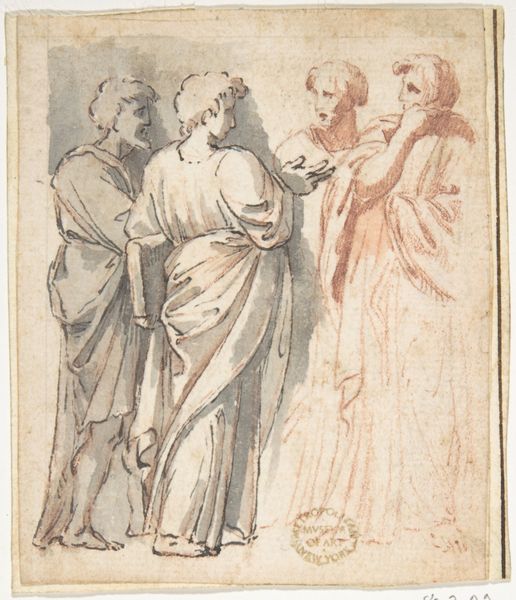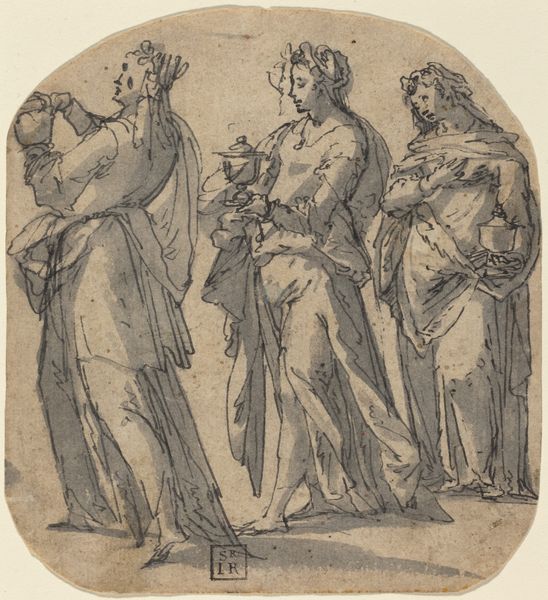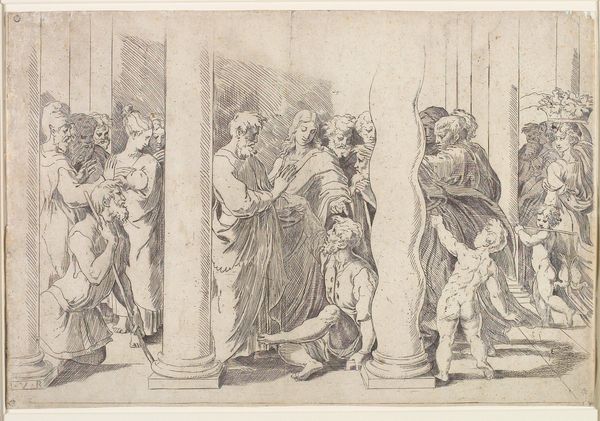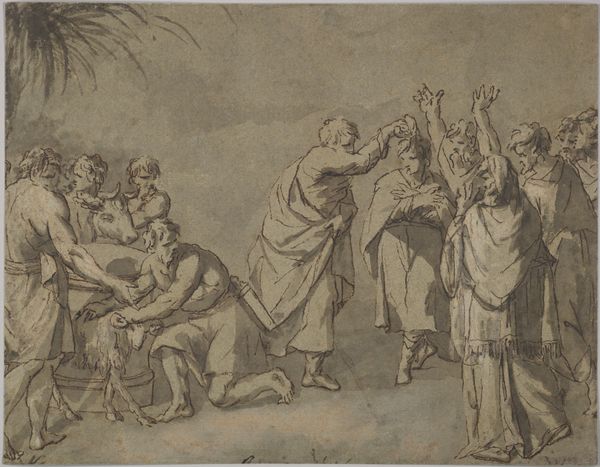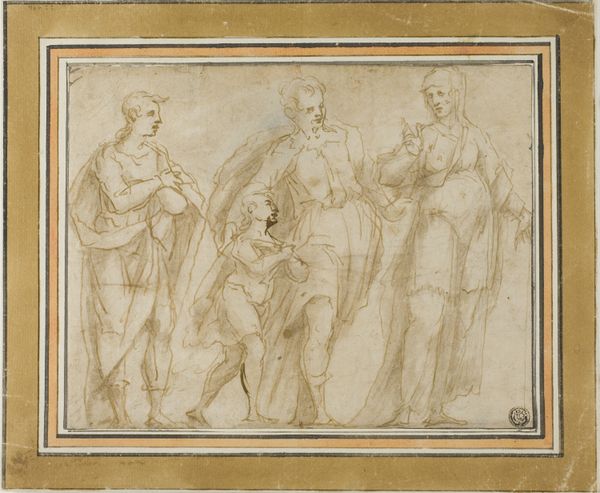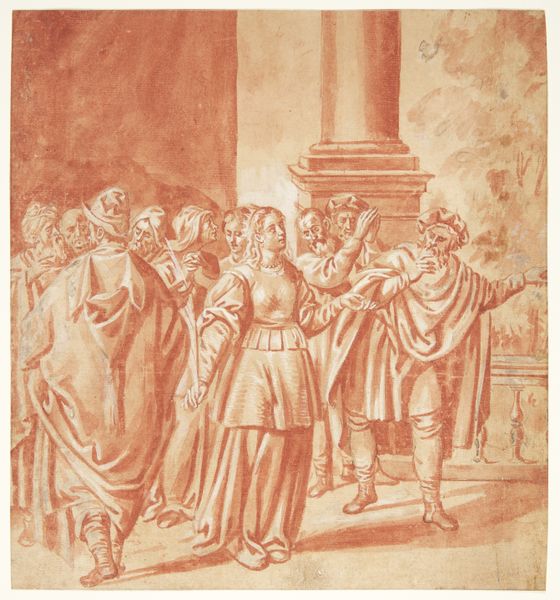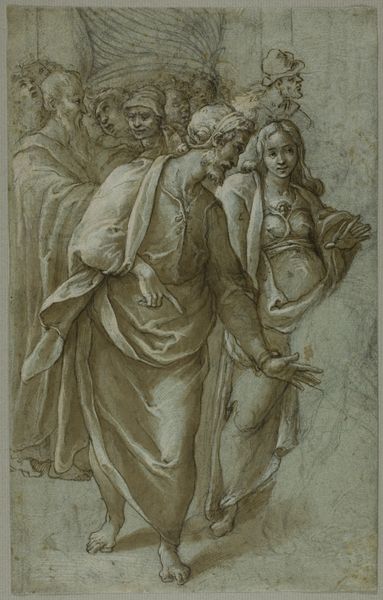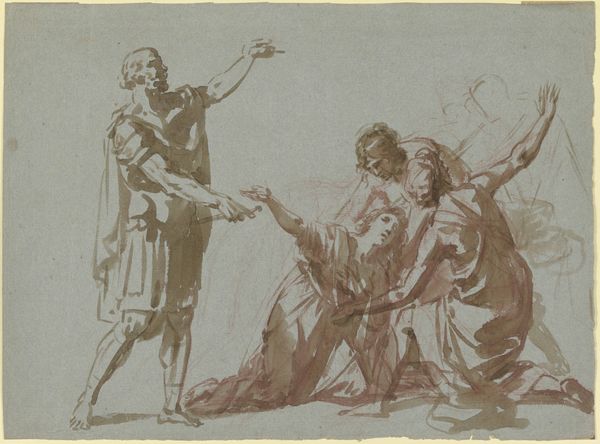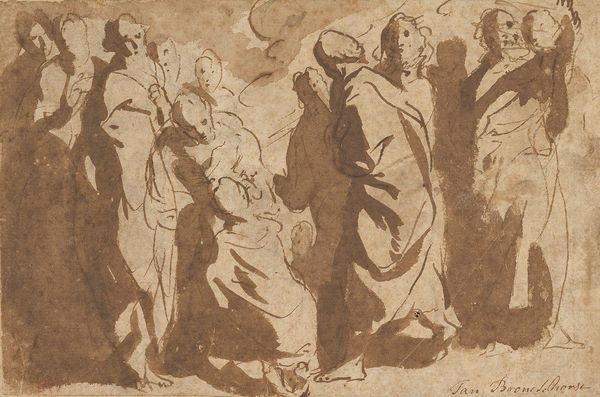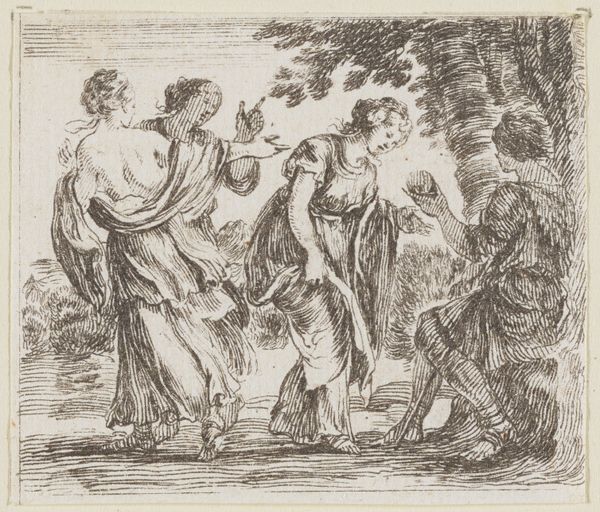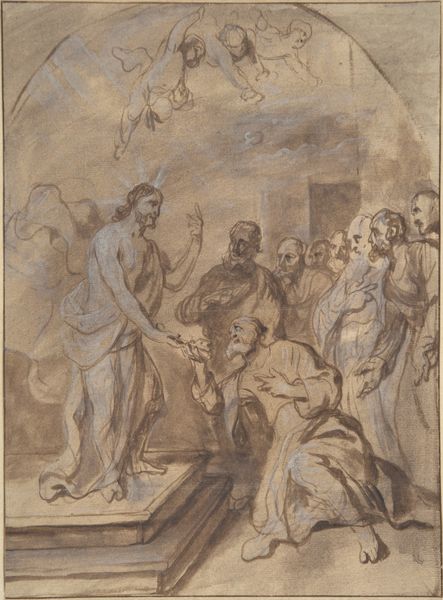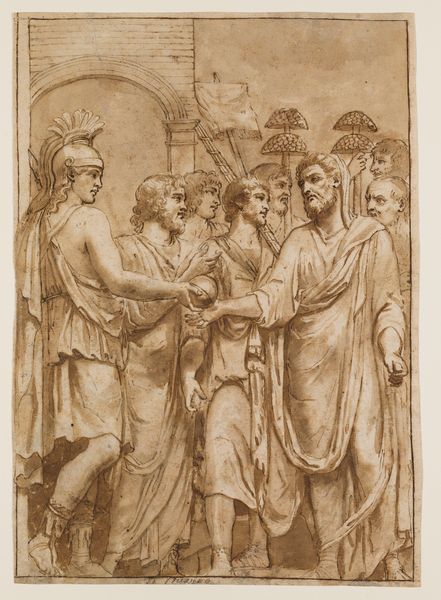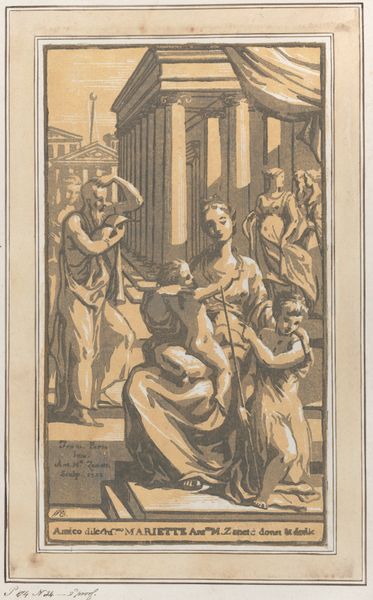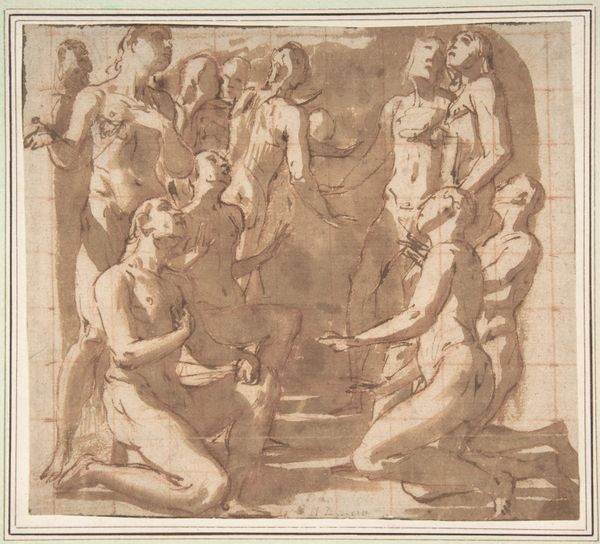
drawing, print, paper, ink, charcoal
#
drawing
# print
#
charcoal drawing
#
mannerism
#
figuration
#
paper
#
11_renaissance
#
ink
#
charcoal
#
history-painting
Dimensions: 124 × 131 mm
Copyright: Public Domain
Curator: Here we have "Group of Nine Standing Figures," a drawing created with ink and charcoal on paper by Parmigianino, dating back to between 1524 and 1527. It’s currently housed here at the Art Institute of Chicago. Editor: My initial impression is of a very stylized rendering. The figures are elongated, almost to the point of being ethereal. The limited tonal range contributes to an atmospheric quality. Curator: Absolutely. The Mannerist style really comes through here. Parmigianino, deeply influenced by the socio-political and religious tensions of the Reformation, uses elongated forms and artificial poses to create a sense of unease and spiritual striving. These figures, seemingly classical in drapery, also embody a certain fragility in light of the iconoclasm of the era. Editor: I'm drawn to the rhythmic repetition of form. Notice how the lines create a sense of movement despite the figures being ostensibly "standing." The use of line and wash, combined with a subtly textured paper, gives the artwork depth despite its essentially monochrome palette. How do you see that formal language working to shape the context? Curator: The monochromatic palette speaks to the limited, often austere resources that artists had access to at the time. There's also the reading of muted colours as being symbolic for a loss of faith. These individuals— are they community elders, are they townspeople looking at the viewer, seeking support? Their stances create a palpable psychological tension. The Renaissance ideals of perfect symmetry are fractured here. Editor: Precisely. Semiotically, that imbalance disrupts expectations. The distortion isn't merely stylistic; it communicates, disrupts, and poses open-ended questions, doesn't it? The formal composition really underpins all potential themes in its elegant and challenging structures. Curator: It also resonates within the broader context of anxieties about representation and power during the Reformation. He subtly critiques established societal structures, through the group depiction and individual expression. Editor: Well, seeing your reading now has provided a refreshing new layer that I had previously not observed. I now have more considerations about the artist's potential intention and background. Curator: Similarly, I'm appreciating that close attention to how the artist's hand guides our perception. I think this piece beautifully showcases how art reflects both the beauty of form and complexities of life.
Comments
No comments
Be the first to comment and join the conversation on the ultimate creative platform.
